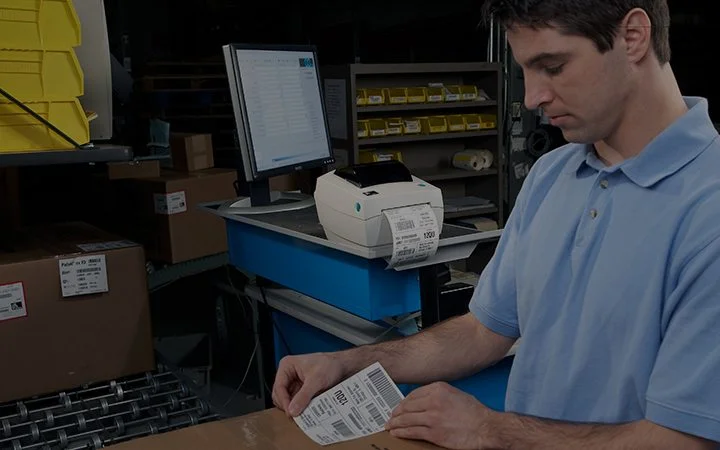SIA “AMRO BALTIC” informs that cookies are used on the website to ensure the operation of the website www.amro.lv, to improve the user experience, and to obtain user statistics.
Cookie policy
1. Terms used in the cookie policy:
1.1. User – User or visitor of the Internet site;
1.2. AMRO – SIA “AMRO BALTIC”, Reg. No. 40103627507, Riga, Lāčpleša street 87I, LV-1011, Latvia
2. What are cookies?
2.1. User or visitor of the website;
2.2. Small files that are stored on the User’s devices. When the User uses the AMRO website, our system reads these cookies and adjusts the settings accordingly. Thus, cookies are a key to your browser’s requests for customised information. Cookies are also used for other functions, such as obtaining statistics.
3. What are the categories of cookies?
3.1. The website may use the following cookies:
3.1.1. Mandatory cookies – ensure customised operation of the website for the choices made by the User, for example, saving the approval of the cookie policy. Cookies are necessary for the user to be able to use the functions of the website to their full potential and navigate through the website. Without these cookies, it is impossible to provide the user with the services offered by the website; they are essential for providing the website.
3.1.2. Performance improvement and analytics cookies – Cookies do not collect personal data; the information is anonymous. Remembers the user’s website usage habits, such as the most frequently visited pages, and improves the website’s performance and analytics of usage and other activities. The data is anonymous.
3.1.3. Target or advertising cookies – Used to provide website advertisements related to the user’s interests and Internet usage habits.
3.1.4. Third-party cookies – Any third-party cookies, such as Google Analytics, YouTube, etc., created as a result of the use of services necessary for the third party to provide a full-fledged service to the website owner.
4. Sub-categories and duration of cookies
4.1. Each cookie is assigned a duration, how long it stores the obtained personal data and processes it. A cookie may also not have a specific period; the following categories of cookies can be further divided into two subcategories – session and permanent cookies, which describe the nature and duration of the cookie’s activity:
4.1.1. Session cookies – are placed for the duration of the visit to the website, and the information obtained is not stored longer than the session of visiting the website.
4.1.2. Permanent cookies – information is placed and saved on the user’s computer even after the website visit ends. The term storage of data may differ for each cookie.
5. What cookies are used on the AMRO website www.amro.lv?
| Cookie name | Manager | Cookie categorie | Targets | Type | Duration period |
| rc::a | google.com | Mandatory cookies | The cookie is used to distinguish people from bots; such information is necessary to analyse website usage habits accurately. | HTML | Permanent |
| rc::c | google.com | Mandatory cookies | The cookie is used to distinguish people from bots; such information is necessary to analyse website usage habits accurately. | HTML | Sessions |
| wc_cart_hash_# | amro.lv | Mandatory cookies | The cookie stores information related to the products placed in the cart. | HTML | Permanent |
| wc_fragments_# | amro.lv | Mandatory cookies | The cookie stores information related to the products placed in the cart. | HTML | Sessions |
| GPS | youtube.com | Advertising cookies | Registers a unique user ID on their mobile devices to enable tracking based on GPS location. | HTTP | 1 day |
| IDE | doubleclick.net | Advertising cookies | Uses Google DoubleClick to record and collect the actions of the website user after visiting or viewing an ad to evaluate the ad’s effectiveness and ensure a more accurate selection of the target audience. | HTTP | 1 year |
| test_cookie | doubleclick.net | Advertising cookies | It is used to check whether the user’s internet browser supports cookies. | HTTP | 1 day |
| VISITOR_INFO1_LIVE | youtube.com | Advertising cookies | Evaluates the user’s capacity to open websites that integrate YouTube videos. | HTTP | 179 days |
| YSC | youtube.com | Advertising cookies | Registers a unique ID to maintain statistics on YouTube videos viewed by the user. | HTTP | Sessions |
| yt-remote-cast-installed | youtube.com | Advertising cookies | Stores user video playback settings with integrated YouTube video. | HTML | Sessions |
| yt-remote-connected-devices | youtube.com | Advertising cookies | Stores user video playback settings with integrated YouTube video. | HTML | Permanent |
| yt-remote-device-id | youtube.com | Advertising cookies | Stores user video playback settings with integrated YouTube video. | HTML | Permanent |
| yt-remote-fast-check-period | youtube.com | Advertising cookies | Stores user video playback settings with integrated YouTube video. | HTML | Sessions |
| yt-remote-session-app | youtube.com | Advertising cookies | Stores user video playback settings with integrated YouTube video. | HTML | Sessions |
| yt-remote-session-name | youtube.com | Advertising cookies | Stores user video playback settings with integrated YouTube video. | Sessions |
6. Google Analytics
6.1. For AMRO to better understand the actions of website visitors, AMRO uses the services of the Google Analytics web analysis platform – a Google Analytics cookie is stored on the User’s device, which, combined with the code embedded on the AMRO website, collects information about the User’s visit and sends it to Google servers. Subsequently, AMRO accesses these statistics, analyses them and adapts the website to the users’ needs. The collected information is anonymised before Google stores it on its servers.
6.2. If the User does not want Google Analytics to process the relevant person’s data, the User can stop the placement and analysis of such cookies by installing the Google Analytics Opt-out program on their device. (Google Chrome Opt-out tool available at: www.tools.google.com)
7. Disabling cookies:
7.1. The User has the right to control how many cookies are placed on the User’s device; that is, the User has the right to disable the placement of cookies on the website that provides functions that are not related to the provision of the basic operations of the website, i.e. mandatory cookies.
7.1.1. To check or change cookie settings in Firefox:
Press the menu key ![]() and select the “settings” section.
and select the “settings” section.
Select “Privacy and security” and go to the subsection “Cookies and website data.”

- Select “Allow access to cookies and website data” to enable the use of cookies. To disable it, select “Block cookies and site data” and use the window below to choose the type of cookies you want to block.
Detailed information on disabling third-party cookies can be found in the instructions below.
Choose the storage time of cookies, keep until:
- To they expire: Each cookie will be removed when it reaches the expiration date set by the website manager that places the cookies.
- As soon as the Firefox browser closes: Cookies placed on your device will be removed when you close your browser.
Close open windows. Any actions and edits you make will be automatically saved.
7.1.2. Disabling third-party cookies in Firefox:
Press the menu key ![]() and select the ‘content blocking’ section.
and select the ‘content blocking’ section.
The action will take you to the ‘content blocking’ subsection in the ‘privacy and security’ section of Firefox.

Uncheck the “third-party cookies” box to prohibit the placement of third-party cookies on your devices. To deny all third-party cookies, change the settings from the recommended box, i.e. Trackers, to “all third-party cookies”, but if you choose this setting, it is possible that a couple of websites may not work completely or not at all.
Note: If the tick is already set and you see the message in the picture: Your Cookies and website data settings do not allow changes to third-party cookies, follow the step below.
Go to the section Cookies and Site data (described in the first part of the instructions) and change the type of cookies to be blocked.
7.1.3. Disabling cookies in the Google Chrome browser:
- In the upper left corner of the Internet browser, next to the website address window, press the grey box and select the “cookies” section.
- By selecting the “cookies” section, a window will open where you can choose which cookies will be removed or blocked.

- Suppose you want to block cookies, select the specific cookie and press the “block” button. In that case, this means that the cookie will not be placed on your device in future sessions of visiting the website, whereas if you want to remove the cookie after using the website, press the “remove” button. Still, it will be deployed if you revisit the website. Blocked cookies can be viewed in the subsection “blocked cookies.”
- If you want to opt-out of the placement of third-party cookies, select all Google cookies and block them.
- After making your selections, press the “Finish” button, and all changes will be saved.





















